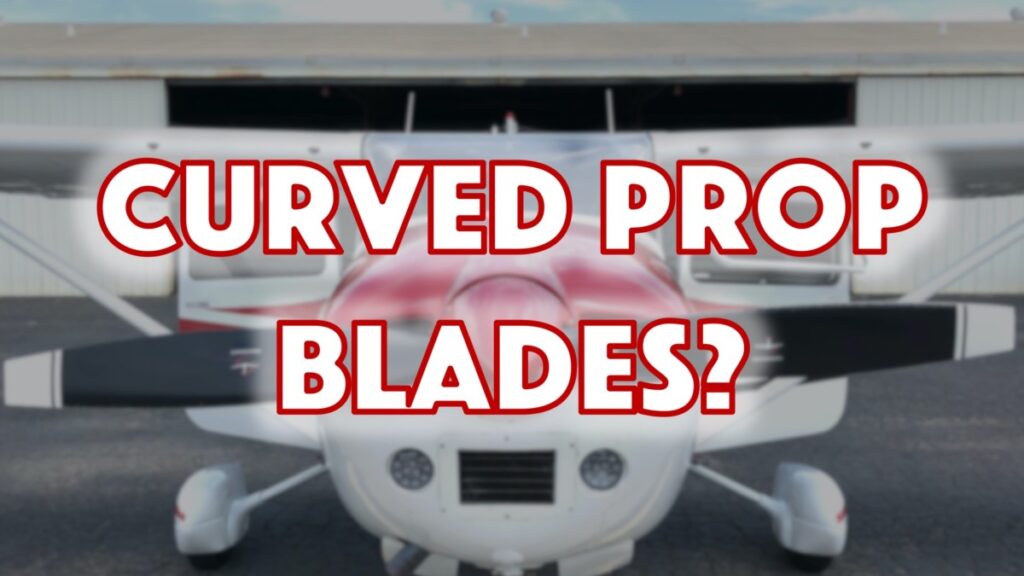
Just a few years ago, if you looked around the typical general aviation ramp, you typically didn’t see much diversity in propeller design. However, that has been changing. Curved propellor blades are starting to be much more common.
Why are some propeller blades curved?
Propeller blades serve the same purpose as swept-back wings, which is to reduce drag at the tip of the airfoil where the blade speed is the highest. This increases the efficiency of the propeller when the tip reaches high, subsonic speeds.
A propeller’s main job is to convert the rotational force of the engine into thrust. Small gains in propeller efficiency make a big difference.
An efficient propeller converts more “lift” generated by the blades into thrust than an inefficient propeller. One of the design elements that improves efficiency is having a curved propeller blade.
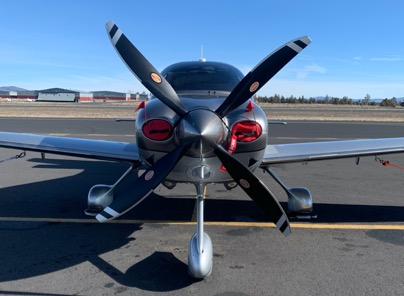
Curved Propellers Are Similar to Swept Wings
In order to understand why curved propellers are more efficient, it will help to first take a moment and think about a special type of airfoil – swept wings.
When planes got significantly faster at the dawn of the jet age, there were two phenomena that made further speed increases difficult to achieve, and swept wings (angled towards the rear of the aircraft) helped overcome these problems.
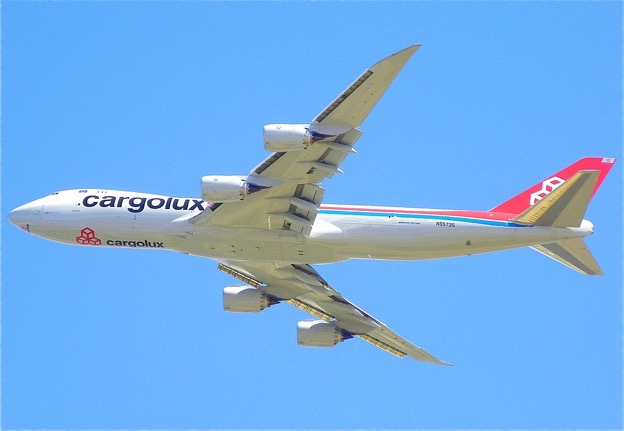
The first phenomenon has to do with drag – aerodynamic drag increases as the square of velocity. This means that a doubling of speed results in a fourfold increase in drag.
Aircraft designers realized how valuable it would be if they could find a way to “trick” the airfoil into thinking that its speed was less than it actually is – even by a little bit.
Another phenomenon dramatically increases drag at high airfoil speeds. Namely, the shock wave that develops around airfoils when they approach the speed of sound (around 750mph at sea level) adds a large amount of drag.
This is known as wave drag.
The wave drag created by the formation of that shock wave is substantial. In fact, it is so substantial that it gave rise to the term “sound barrier”.
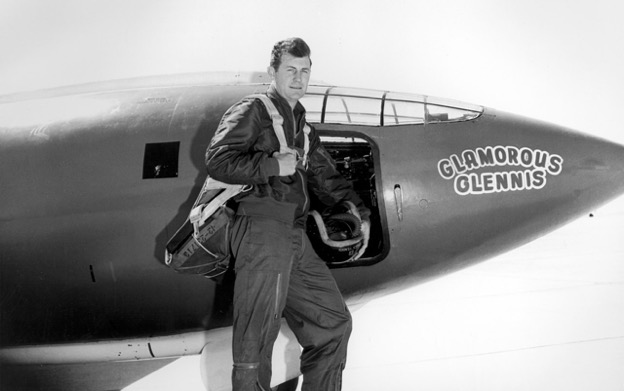
Aeronautical engineers contended with these two phenomena – the square relationship of velocity to drag, and wave drag (shock wave induced drag).
As the fastest aircraft of the day approached speeds near the speed of sound, reducing drag was paramount to getting the most efficiency out of aircraft wings.
An ingenious solution was devised in Germany in the 1930s: the swept wing.
The swept-wing plan form features a leading edge that is angled to the relative wind – giving modern aircraft V-shaped wings.
The airflow over swept wings can be thought of as being divided into two components; the spanwise airflow and the airspeed sensed by the wing.
As is illustrated below, a swept wing moving through the air at Mach 0.85 displays drag characteristics as though it is only going Mach 0.70 thanks to the sweep.
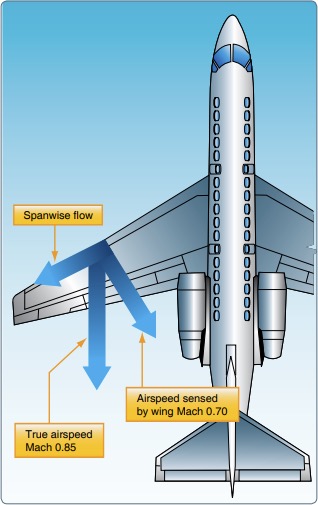
The aerodynamic drag decreased dramatically thanks to the square-law discussed before. Even better, the airfoil is not generating wave drag associated with near-supersonic travel.
The result is significantly less drag over all – suddenly, much higher speeds at lower fuel burns were possible.
“OK”, you say, “I understand the idea behind the swept back wing, but my Cessna 172 doesn’t travel anywhere near supersonic speeds. So, how does this apply to me?”
Your propeller is a high speed airfoil!
As was covered in my article about why aircraft propellers are twisted, the tip of an airplane propeller is moving at incredible speed.
When the propeller in my plane is spinning at 2,500 RPM, the tips of the blades are moving at 558 MPH. That works out to Mach 0.74!
You can compute your aircraft’s propeller speeds by using this propeller tip speed calculator found at Warp Drive Props.
Several aircraft have propellers that are large enough and spin fast enough that the tips move through the air at transonic speeds (between Mach .80 and Mach 1.2). Once the airfoil is transonic, the sound barrier shock wave-induced drag becomes a hugely important factor.
Even if your propeller tip does not travel at supersonic speed, finding a way to sweep it back will also reduce the aerodynamic drag.
Since that drag has a squared relationship with blade speed, any reduction at those high speeds makes a big difference on drag.

The Curved Propeller is a “Swept Back” Airfoil Planeform
The best way to enjoy the benefits of a swept airfoil on your propeller is to curve the blades.
The curve, as opposed to a straight-line sweepback like found on an airliner wing, is desirable because of the speed difference between the root and tip of the propeller.
The blade root is moving relatively slowly (around 145mph in a Cessna 172 at 2,500rpm) compared to the tip. So, there’s no need to sweep back much more than the tip in most general aviation propellers.
For propellers that are swept back, the most pronounced curve is at the tip where the airfoil speed is the greatest (see image above).
The curve of the blade resembles the look of a scimitar. Hartzell even makes a propeller called the “scimitar propeller” for this reason.
Is there a significant performance gain with a scimitar-type propeller?
Unless you have an aircraft whereby the tips approach or exceed the speed of sound (like a Cessna 185, with its giant 86” propeller), the performance gains from a curved propeller may be negligible in most general aviation aircraft.
Others claim that they see noticeable performance gains even in aircraft that don’t produce that type of tip speed. You should talk to a reputable propeller shop if you have more questions about your personal aircraft.
Here’s how that Cessna 185 with a large prop sounds, by the way. Sound on!
When were curved propellers invented?
Interestingly, wright-brothers.org notes that the famous Wright brothers developed “bent-end” propellers as early as 1905.
The Wright brothers focused a tremendous amount of research on propeller design and were ultimately able to achieve propeller efficiency numbers of 78%, compared with modern-day propellers which are around 83% efficient.
You can read more about propeller efficiency in our article about 2, 3, and 4 bladed propellers compared.
However, the earliest successful curved propeller designs are largely credited to Lucien Chauvière. His “Integrale” propeller design was commercially successful and featured a scimitar shape.
Are there any other benefits to a curved propeller?
Other than the aerodynamic advantages resulting in a gain in propeller efficiency, there are a few other advantages worth mentioning.
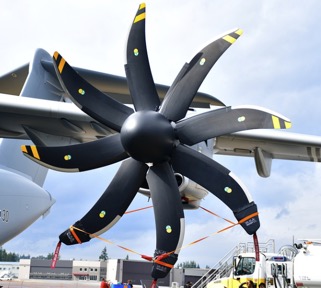
In aircraft with propeller tip speeds that generate a shock wave, an important benefit of shock wave reduction is a quieter propeller. The shock wave is what can produce little sonic-booms as the propeller spins and the tips go supersonic.
The curve may bring that effective speed down to a subsonic level, making for a much quieter aircraft in the cabin and on the ground. Quieter propeller airplanes are much more popular with the flying public and residents nearby airports.
The other, more subjective, benefit is purely cosmetic. The scimitar-style blade just plain looks better to many.
When the time comes to replace your propeller, that may be a good-enough reason to take the plunge!



